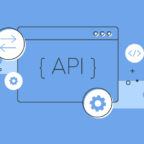In the realm of custom software development, the landscape is always shifting towards improving accuracy and efficiency. The biggest roadblock, however, appears in the form of problems during the development as well as the deployment stage. So how do software developers manage to tackle the myriad bugs and problems they face on a daily basis? The answer lies in three modern-day solutions/technologies: DevOps, CI/CD and Containerization. This blog aims to explore how these three technologies can be successfully combined with one another for optimal results.
The Power Trio: DevOps, CI/CD, and Containerization
Before exploring how integrating these three technologies can skyrocket development and deployment timelines, it is important to understand how each system works in the first place.
DevOps: During the early days of custom software development, there was a noticeable gulf between the development and IT teams. The development team focused mainly on creation, whereas the IT team was responsible for maintenance and bug fixes. However, DevOps offers a collaboration between the two teams to improve the overall functionality of the software.
CI/CD: CI/CD stands for continuous delivery/continuous deployment. As is evident, no modern-day software is complete without constant and reliable customer support. CI/CD aims to automate this support by implementing incremental code changes to make the software more user-friendly and stable.
Containerization: To eliminate extreme reliability on vendors, containerization grants the ability to run a software or application in isolated user spaces, aka containers, by bundling all code and respective libraries together, so it can run in any cloud or non-cloud-based environment.
With the definitions out of the way, integrating the three together translates to seamless development and operations, easy code integration, and consequently, super-fast deployment time, making it a boon for software developers and vendors. The exact processes are explored below in detail.
DEVOPS: Merging the Gap Between Development and Operations
As mentioned previously, the main aim of DevOps is to bridge the gap between the development and operations teams. And what is achieved via this collaboration? A shorter and highly optimized software development life cycle (SDLC). SDLC can be defined as the entire software development process, right from conceptualization to scheduled maintenance and bug fixes. Obviously, a shorter SDLC will make it more profitable for custom software development companies to roll out new products in the market.
Now, the main way DevOps manages to shorten the SDLC is through aligning goals, sharing responsibilities and automating the process as much as possible. By aligning goals, both teams are on the same page regarding the software and can tackle emerging problems quickly as a result. Similarly, instead of pushing the tasks on one team or the other, the two work in tandem to solve issues in real-time. Lastly, automating a good part of the process decreases the SDLC even further.
Ultimately, through the collaboration of two previously separate departments, DevOps optimizes the time it takes for custom software to hit the market, significantly improves customer satisfaction, and delivers high-quality, practical software. However, DevOps is only one part of the equation. Next up, the role of CI/CD will be explored in greater detail.
CI/CD: Accelerating Software Delivery Through Continuous Integration and Continuous Deployment
While CI/CD is clubbed together during software development, the two are distinctly different. As stated above, CI stands for continuous integration. Any small changes in the code need to be quickly integrated into the software to improve its functionality. However, before that, it must be free of errors, otherwise, it threatens to decrease the operating capabilities of the software. This is done by merging the new code changes to a communal repository, where it is tested to see if it creates any conflict with existing code.
If there are no snags or errors during the integration, the next step is continuous deployment. CD essentially deploys the newly integrated code into the current software environment across all stages, including development, production and testing. However, doing this manually makes it more prone to errors, not to mention time-consuming. Therefore, CD automates this process to create a smooth, seamless deployment.
When combined together, CI/CD aims to improve the pre-existing software to make it more functional, increase automation, and provide rapid feedback loops, so constant improvement remains a top priority. Furthermore, it also reduces the time and effort required for each update or release, ensuring even shorter release times with each successive iteration.
Containerization: Empowering Software Deployment With Efficiency and Portability
Conventional software or applications rely heavily on infrastructure. For instance, installing a Windows software package required one to use a Windows machine. However, with containerization, this reliance on a vendor or infrastructure has become a thing of the past. As explained earlier, containerization is the process of giving software the freedom to run in an isolated environment, irrespective of the conditions. This means adding all aspects of the software or application, right from the code and system tools to libraries and more are enclosed in a single bundle or package, known as the container.
Hence, the emphasis on underlying infrastructure is removed, making it far easier to deploy new custom software. This means it is easier to scale operations for a particular business, make their software far more accessible by making it portable, and finally, highly efficient utilization of resources. It also makes it easier to migrate containers across different environments, such as cloud-based and non-cloud-based servers. Lastly, another added advantage of containerization is consistency. Due to the simplistic nature of deployment, all changes and updates can be made quickly, ensuring consistent high-quality software and a high level of customer satisfaction. The next segments will explore the amalgamation of these technologies.
Combining CI/CD With DevOps
Now that each technology is better understood, it’s time to see how DevOps and CI/CD are used together to create exceptional custom software and excellent user experience. First and foremost, DevOps and CI/CD are closely tied together. The development team and operations team employ numerous CI/CD workflows and protocols.
In essence, DevOps is the structural and cultural foundation for CI/CD. By ensuring complete cooperation and collaboration between the teams, the integration and deployment of software is enhanced exponentially. CI/CD takes care of the automation, integration and steady deployment of the software. Thus, if there are any problems faced during the CI/CD phase, automatic integration and constant testing will handle any lingering errors. This is made possible by the synergy of DevOps, which implements the CI/CD workflows right from the inception and continues to follow them during the operation side of things.
The end result is that any software development organization using this combination of CI/CD with DevOps ensures rapid response to customer feedback and constant introduction of new and improved features which consequently improves customer experience. Lastly, all this is managed without compromising on the high quality of the software.
Harnessing the Power of Containerization in CI/CD
Since containerization aids in providing a better runtime environment for any software/application, it plays a vital role in a standard CI/CD process. Since constant integration and deployment is the name of the game here, the easily accesible, self-contained package structure of a container helps in efficiently deploying new updates and features irrespective of the infrastructure.
Subsequently, CI/CD operations are particularly adept at managing container images. Container images can be defined as a fixed, static file containing all relevant information packages of the application. This eventually means consistent and fast deployment across the entire CI/CD pipeline, ensuring the software is delivered fairly quickly. Moreover, due to the almost instantaneous nature of deployment created by containerization, it offers companies more leeway to rectify any errors or issues when a new feature or update is released.
Lastly, containerization improves automation and scalability. Therefore, software development companies can focus more on research, innovation, and building new features that can exponentially improve user experience. As for scalability, containers help deploy the same container image multiple times. Therefore, in a cloud-based environment, this combination can help any organization to meet the ever-changing, dynamic demands of the customer by easily adjusting and allocating their resources.
Conclusion
In the end, custom software development has improved exponentially thanks to DevOps, CI/CD and Containerization. The first helps in building collaboration between developers and IT teams, the second aids in adding and deploying new features quickly, and the third makes the software independent to run on any server or infrastructure by making it self-containing. However, even more importantly, it is the synergy between DevOps and CI/CD and CI/CD and Containerization that can ultimately take software development to the next level.
FAQs:
1. What is the lifecycle of DevOps?
The DevOps lifecycle has 8 phases in total: 4 in the development phase and the rest in the operations phase. The first 4 phases are to plan, code, build and test, after which it is release, deploy, operate and monitor. The most important thing to remember here is that DevOps is a continuous process, that is the workflow is continuous. Consequently, its sub-components also follow the same pattern. A great example is Continous Integration/Continous Deployment (CI/CD), which embodies this concept of constant testing, delivery and monitoring to continuously improve the software/ application and customer experience with each passing iteration.
2. What is the difference between CI CD and DevOps?
DevOps is fundamentally a development practice/concept which runs on the principles of collaboration, communication and utilizing the best tools for a particular process. The end result is to create an agile and streamlined software development process which is easy to maintain and monitor, thanks to the synergy of different teams and workflows.
CI/CD, on the other hand, is a part of DevOps. It is a tool or a tactic used to continuously add new code and new features to existing software, testing it to see its compatibility with the code present already, and then deploying it swiftly to the end user.
3. Why use Kubernetes for CI/CD?
First and foremost, Kubernetes is an open source container management and deployment portal designed by Google. Right from deploying and scaling to administering container workload, Kubernetes can manage it all. However, operating Kubernetes manually can be cumbersome and lead to many errors.
Enter CIC/CD, which, in tandem with Kubernetes, can automate the entire code changes when the source code is changed initially. Thus, combining the two will lead to automated, timely updates which can be easily disseminated using Kubernetes extensive platform and reach. Of course, this integration can have its own set of challenges, but it can be resolved easily by following some Kubernetes and CI/CD friendly practices.
Author’s Bio:
I’m Dhruv Mehta, a passionate advocate of Generative AI. With over 5 years of experience as a content marketing consultant, I’ve been sharing insights on DevOps and Software Development. Currently, I am scaling content marketing & SEO of Canada-based Custom Software Development Firm, Vestra Inet. I’m on an exciting journey to unravel the potential of AI writing tools, and my enthusiasm is contagious!



